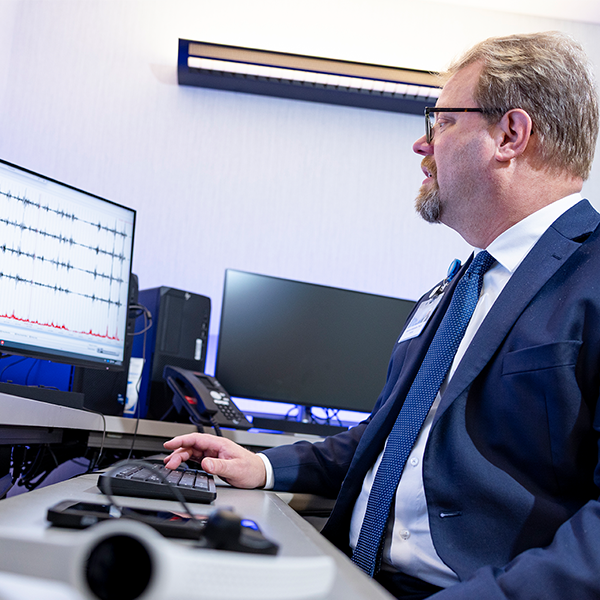-
Mayo Clinic Q&A: When to consider virtual care

DEAR MAYO CLINIC: We live in a rural area about 40 minutes from our health system's nearest clinic. However, they do offer the option to meet virtually with our healthcare team members. We'd like to try virtual care. Could you tell us more about it?
ANSWER: Whether you live in a rural or urban community, virtual care can be a great choice for connecting with healthcare. You can save drive time, avoid bad weather and stay home when it's best not to be in a clinic where you could infect others.
But even better, if your primary care clinic offers video visits (most do), you maintain continuity of care with your healthcare team, whether you're at home or traveling. Any information and care recommendations are entered into your electronic health record.
Choose your virtual option
There are typically three main types of virtual care (also called telemedicine or telehealth): messaging, video visits to your home, and video visits at a clinic.
Messaging. You and your healthcare professional exchange information via a secure messaging platform. This can include questions about a condition, medications or follow-up from a previous appointment. Your clinician usually responds within 24 hours or less. Messaging may lead to a video visit or an in-person appointment.
Video visit to your home. Through your health system's patient portal, you can set up a video appointment with a member of your healthcare team, just as you would an in-person appointment. Just as with an office visit, hearing your story about how something happened, symptoms you're experiencing, medication side effects and more, can help your clinician make an informed diagnosis.
During a video visit, you can discuss your issue with your clinician, upload photos to give your healthcare team a close-up look at something, like a rash or lump. For example, if your child has an ear infection, there's an inexpensive device you can purchase online that takes a video of the ear canal. With this information, your clinician can recommend care.
Your clinician also may order other services or arrange to have a specialist connect with your visit. You can even invite a family member or friend to join the visit to provide an extra set of ears.
In addition, if you need translation services, they can be arranged when you make your appointment. During the video visit, your clinician, interpreter and you will all be online.
Video visit at the clinic. Another variation of video visit is making an in-office appointment but then connecting with a specialist online. This is particularly helpful for patients who may not have stable internet connections.
On-demand care. Your health system may offer other forms of virtual care, such as on-demand care via a mobile app. This service is typically available 24/7 every day, including weekends and holidays. On-demand care can focus on an urgent problem, but you can also schedule an appointment and arrange to receive helpful reminders about prescriptions, lab work, follow-up appointments and more.
Your in-person and virtual providers collaborate on your care through a shared medical record. However, the level of integration varies widely across healthcare organizations.
When to consider virtual care
The list of conditions that can be addressed virtually is a long one, including:
- Upper respiratory Infections, including colds, influenza and COVID-19 (especially now with home diagnostic kits)
- Sinusitis
- Rashes
- Insect bites
- Constipation
- Mental health conditions
- Urinary tract infections (often coupled with a lab test)
- Monitoring and adjusting medications for chronic conditions
- Follow-up for many chronic conditions, including:
- Diabetes
- Weight-loss medications
- High blood pressure (if you have a home blood pressure cuff)
- Cholesterol
- Low thyroid
However, if you're having difficulty breathing or chest pains, you should go to the emergency department. If you suspect something is broken or infected, you should also seek in-person care because these conditions tend to require a "hands-on" exam and assessment or direct treatment.
Before, during and after your video visit
Here are a few tips for a successful video visit:
- When you make your appointment, upload any photos or videos that could give your clinician a close-up view of the problem.
- Be sure you have a reliable internet connection.
- Arrange for a quiet space for the visit, especially since you'll be sharing protected health information. Having a video visit at a coffee shop or on a public computer may not be a good choice.
- Dress comfortably but appropriately.
- Make a few notes about what you want to cover with your clinician.
- Be sure to ask questions. If someone is joining the visit, let them know they can ask questions, too.
- Following your visit, you'll receive an after-visit summary just as you do with an in-person visit. It's typically delivered to your patient portal.
David Blair, M.D., Family Medicine, Medical Director, Primary Care on Demand, Mayo Clinic Health System, Bloomer, Wisconsin







